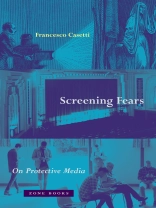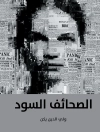A historical and theoretical investigation of the unexpected ways screen-based media protect and excite viewers’ fears and anxieties of the world
In this brilliant contribution to contemporary media studies, acclaimed theorist Francesco Casetti advances a provocative hypothesis: instead of being prostheses that expand or extend our perceptions, modern screen-based media are in fact apparatuses that shelter and protect us from exposure to the world. Rather than bringing us closer to external reality, dominant forms of visual media function as barriers or enclosures that defend against the apparent threats and dangers that seem increasingly to surround us. Working with an original historical overview that begins with the Phantasmagoria of the late eighteenth century, then the shared interior spaces of the movie theater in the early to mid-twentieth century, and finally the solitary digital milieus of the present, Casetti traces the outlines of the protective “bubbles” that disconnect us from our immediate surroundings. To be provided with a shield of immunity to the hazards and uncertainties of the world while experiencing them at a safe remove might seem a positive development. But, he asks, what if these media, instead of providing invulnerability, ensnare individuals in a suffocating enclosure? What if, in their effort to keep reality under control, they exercise a violence equal to that of the dangers they resist? In a dialectical exercise, and through a vivid range of cultural artifacts, Screening Fears traces the emergence of modern protective media and the way they changed our forms of mediation with the world in which we live.
Sobre el autor
Francesco Casetti is the Sterling Professor of Humanities and Film and Media Studies at Yale University. Among his books are Inside the Gaze; Theories of Cinema, 1945–1995; Eye of the Century: Film, Experience, Modernity; and The Lumière Galaxy: Seven Key Words for the Cinema to Come.












